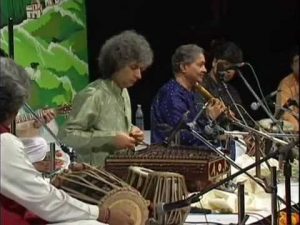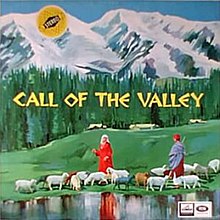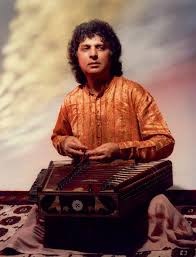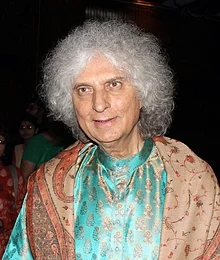ONE remembers attending Pandit Shivkumar Sharma’s recital as a 13-year-old, where he was part of a day-long festival in New Delhi. The year was 1977, and the maestro had walked in after a marvellous vocal presentation by Rajan and Sajan Mishra. I hadn’t heard the santoor before, and his performance was a revelation. The sheer beauty of the sound lingered for hours.
Nearly 20 years later, I interviewed the santoor maestro for the first time at his Pali Hill, Mumbai, residence. He was to give a lecture demonstration for Spic-Macay, a body promoting Indian classical music among the youth, the following day. Nervous in the beginning, I was immediately put to ease by Sharma’s warmth, humility and willingness to answer questions in detail.
Memories like these, along with those of meeting him after countless concerts, come to mind on this sad day. The maestro, who passed away in Mumbai on May 10, was always greeted with a sense of admiration. The peaceful expression on his face never changed.
The world, of course, knows Sharma for making the stringed instrument santoor a household name. Originally played in folk and Sufi music of the Kashmir region, the Jammu-born musician took to it at the age of 13, having learnt a bit of vocals and tabla before. He made many innovations in order to make it more feasible to classical music.

Simultaneously, he played the instrument in many film songs. Much later, in 1981, gave music for the film Silsila with flautist Pandit Hariprasad Chaurasia. As the duo Shiv-Hari, they worked on seven other films, including Chandni, Lamhe and Darr. In an interview to this writer, Sharma said, “We enjoyed our stint as music directors. Composing film music requires a different mindset, based on the story and situation. But we realised that our concerts had come down because of film commitments. Our main area was classical music, so we concentrated on that.”
Sharma’s classical career began in 1955, when as a 17-year-old, he played raag Yaman at the Haridas Sangeet Sammelan in Mumbai. There was no looking back since, and by the early 1960s, he became a prominent name in classical events across India. In 1967, he recorded the pathbreaking album Call Of The Valley with Chaurasia and guitarist Brij Bhushan Kabra. Themed around a shepherd from Kashmir, the album became one of the highest-selling Indian classical albums.

In 1968, Sharma was part of sitar maestro Pandit Ravi Shankar’s troupe on their US tour. This paved the way for many more foreign concerts, either solo or with Chaurasia. He said, “Those days, foreigners were showing interest in Indian music, thanks to Ravi Shankar, Ali Akbar Khan and others. Though there were instruments similar to the santoor, like the dulcimer and hackbrett, we had a different tone and technique. Even if they didn’t follow the nuances, they found the santoor very spiritual and uplifting.”
In interviews, Sharma also talked of how Indian audiences have changed too. He said, “In the past, there were smaller audiences, but they were very informed about the art; today, the number of listeners has increased but many don’t know the technicalities.”
This, he said, had its advantages and disadvantages. He explained, “Good because you could mould them and probably educate them by giving a small talk before the performance. But what’s dangerous is that musicians can get away by playing anything.”

Interacting with the maestro has always been a delightful experience. The interviews were normally conducted at his residence, and would begin only after the tea and biscuits arrived. After concerts, he would often be surrounded by people, known or unknown. He would greet each of them individually, signing autographs and posing for pictures.
As a guru too, he was respected by disciples, who included Rattan Lal Tikkoo, Nandkishore Muley, R Visweswaran and Satish Vyas. Later, his son Rahul began learning from him. Sharma said proudly, “Rahul has not only imbibed my style but added his own touch. He’s not a Xerox copy. He has taken santoor to a different level which has reached out to the younger generation. He has maintained a delicate balance between Indian classical and new-age music. But when he plays classical, he plays it the traditional way.”
Sharma has always been strictly against use of gimmicks in classical music. He felt, “If music doesn’t have melody and depth, it can’t create a long-term impact. There are no short-cuts and one has to go through the grind.” His hard work, sense of innovation and single-minded devotion have all contributed to his success.
Here are 10 albums by Pandit Shivkumar Sharma one can try
1 Call Of The Valley – with Hariprasad Chaurasia ad Brij Bhushan Kabra
2 Silsila – soundtrack with Shiv-Hari
3 Chandni – soundtrack with Shiv-Hari
4 Maestro’s Choice – raags Bhoopal, Kirwani
5 Mountain Breeze – Pahadi
6 The Valley Recalls – with Hariprasad Chaurasia
7 Santoor Viraasat – with Rahul Sharma, Zakir Hussain
8 Bhimpalasi – with Anindo Chatterjee
9 Upanishad Amrut
10 Ananda – Bliss









Dear Mr. Kusnur,
In case you have the transcription of your first interview with this late Maestro Shivkumar Sharma, please share it with the readers of Seniors Today.
Regards
Suresh Panje
Comments are closed.